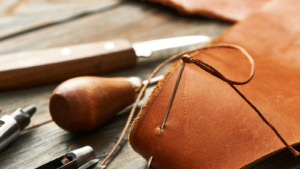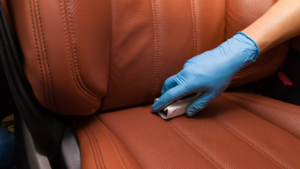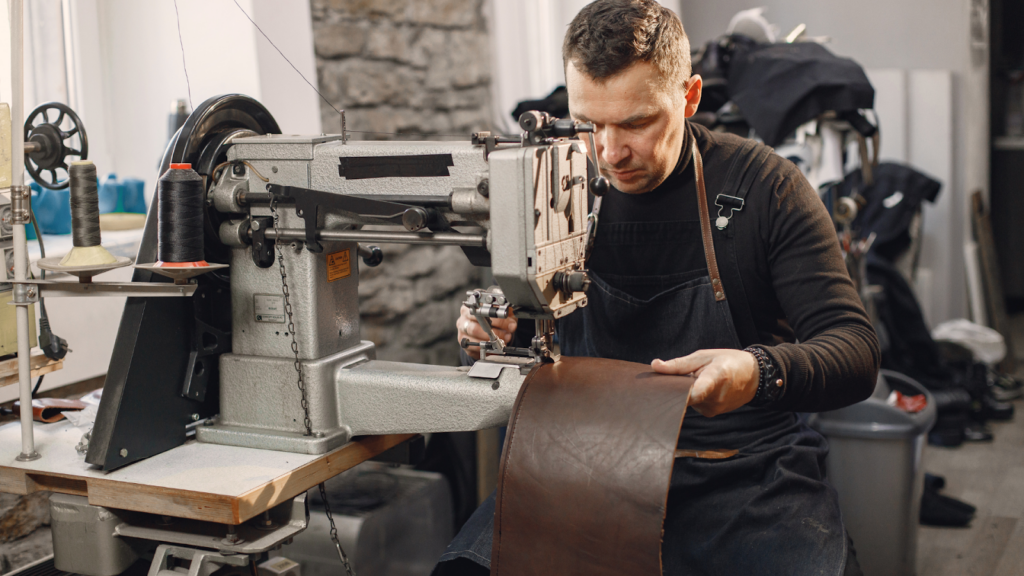
Leather, a material renowned for its durability and timeless appeal, often needs a little tender loving care to keep it looking its best.
This article will delve into the fascinating world of leather refurbishing, offering insights into its benefits, techniques, and the magic behind the transformation.
Leather Refurbishing
Diving into the depth of leather refurbishing unveils its element of beauty and infuses a second life into worn leather goods. This process employs specific techniques to restore the aesthetic charm and comfort of an array of leather products.
The Basics of Leather Care
Caring for leather goods, like jackets or sofas, requires a blend of maintaining, cleaning and, at times, refurbishing. Regular dusting and wiping become mandatory tasks to guard leather’s polished look. Opt for cleaning agents, specifically designed for leather, to expel dirt and stains. Conditioning leather, for instance, with a leather conditioner, locks in moisture, preventing it from becoming dry and brittle.
Common Leather Problems and Solutions
Leather goods often fall victim to various issues. These may include fading due to sunlight exposure, scratches from use, or cracking owing to dryness. These processes vary for individual issues:
- Fading: Professional leather refurbishing often uses re-dyeing techniques to tackle fading. Depending on the depth of color loss, one might need to apply several layers of dye for uniform color restoration.
- Scratches: Small superficial scratches usually disappear with a proper rub of leather conditioner. But, for deeper scratches, refurbishing experts might apply a filler before re-dyeing the area.
The Leather Refurbishing Process

The leather refurbishing process encapsulates several steps, each focused on a different aspect of restoration. As a crucial aspect of maintaining the longevity and beauty of leather goods, a proper understanding of these steps can make a significant difference.
Cleaning and Preparing Leather Surfaces
Begin the refurbishing process by cleaning the leather surfaces. Utilize a soft brush to gently remove accumulated dust or debris. Afterwards, apply a suitable leather cleaner to rid the surface of any lingering dirt and oils.
Repairing Scratches and Cracks
Following cleaning, direct your attention to repairing scratches and cracks that may have manifested on the leather surface. This is where leather fillers come in handy.
Dyeing and Re-coloring Leather
Once scratches and cracks are mended, the process moves to dyeing and re-coloring the leather. The primary objective is to either restore the original color or introduce a new one. Evenly apply the dye using a suitable applicator for a uniform result.
Finishing Touches
Wrapping up the leather refurbishing process involves applying the finishing touches. After ensuring that the dye has dried completely, seal the leather. A leather sealer is essential for this task as it provides a protective layer that guards against potential damage from moisture or general wear.
Professional Leather Refurbishing Services

Professional leather refurbishing services come into the scene when home care attempts fail, or especially intricate repairs are needed. Taking expert assistance guarantees not just the preservation of valuable leather, but also its rejuvenation to near-original splendor.
When to Call the Experts
Summoning experts becomes indispensable under certain conditions. Professional leather refurbishing services become a must when leather shows excessive wear and tear, deep stains, and considerable fading.
What to Expect from Professional Leather Care
Leather care from professionals offers a broad spectrum of services. Services typically start with a comprehensive assessment of the leather’s condition, followed by recommendations for the ideal approach to restoration.
Further, experts employ precision techniques to address deep scratches and wear patches, using special fillers or patching compounds. Re-coloring or re-dyeing using high-quality, durable dyes breathes new life into old, faded leather items.
Must Know
Leather refurbishing isn’t just about restoring the item’s original glory. It’s also about ensuring that it stays in top-notch condition for the long haul. A well-executed refurbishment can breathe new life into leather goods, but it’s the post-restoration care that truly makes a difference. This involves a consistent maintenance routine and protective measures that shield the leather from potential damage.
